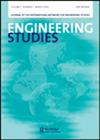评估功能建模框架:作为概念工具的技术优势预测
IF 1.3
3区 工程技术
Q2 EDUCATION, SCIENTIFIC DISCIPLINES
引用次数: 0
摘要
尽管自20世纪60年代以来,功能建模一直存在于工程设计研究中,但还没有系统的、比较的研究致力于根据工程设计目标评估功能建模框架的充分性。这种系统的评估和比较——称为基准测试——现在被认为是当前功能建模研究的核心研究问题,但目前对如何进行基准测试的了解有限。在本文中,我们试图提高我们对如何在特定但重要的工程背景下进行基准测试的认识:逆向工程系统的功能优化。我们认为,在这种情况下,产生技术优势预测的能力,即关于重新设计的技术系统的功能性能改进的预测,是一个重要的基准标准。随后,我们通过评估两个著名的功能建模框架来说明该标准的实用性。在整个论文中,我们使用一个电锅设计的案例来澄清和说明我们的想法。本文章由计算机程序翻译,如有差异,请以英文原文为准。
Assessing Function Modeling Frameworks: Technical Advantage Predictions as a Conceptual Tool
While function modeling has been around in engineering design research since the 1960s, there have been no systematic, comparative studies devoted to assessing the adequacy of function modeling frameworks in light of engineering design objectives. This systematic assessment and comparison – called benchmarking – is now recognized as a central research issue in current function modeling research, but insight into how this benchmarking can be done is at present limited. In this paper, we attempt to improve our insight into how benchmarking can be done for a specific but important engineering context: function optimization of reverse-engineered systems. We argue that the capacity to produce technical advantage predictions, viz. predictions concerning the improved functional performance of a redesigned technical system, is an important benchmark criterion in this context. We subsequently illustrate the utility of the criterion by assessing two prominent function modeling frameworks in terms of it. Throughout the paper, we use a case study of the design of an electric wok to clarify and illustrate our ideas.
求助全文
通过发布文献求助,成功后即可免费获取论文全文。
去求助
来源期刊

Engineering Studies
ENGINEERING, MULTIDISCIPLINARY-HISTORY & PHILOSOPHY OF SCIENCE
CiteScore
3.60
自引率
17.60%
发文量
12
审稿时长
>12 weeks
期刊介绍:
Engineering Studies is an interdisciplinary, international journal devoted to the scholarly study of engineers and engineering. Its mission is threefold:
1. to advance critical analysis in historical, social, cultural, political, philosophical, rhetorical, and organizational studies of engineers and engineering;
2. to help build and serve diverse communities of researchers interested in engineering studies;
3. to link scholarly work in engineering studies with broader discussions and debates about engineering education, research, practice, policy, and representation.
The editors of Engineering Studies are interested in papers that consider the following questions:
• How does this paper enhance critical understanding of engineers or engineering?
• What are the relationships among the technical and nontechnical dimensions of engineering practices, and how do these relationships change over time and from place to place?
 求助内容:
求助内容: 应助结果提醒方式:
应助结果提醒方式:


